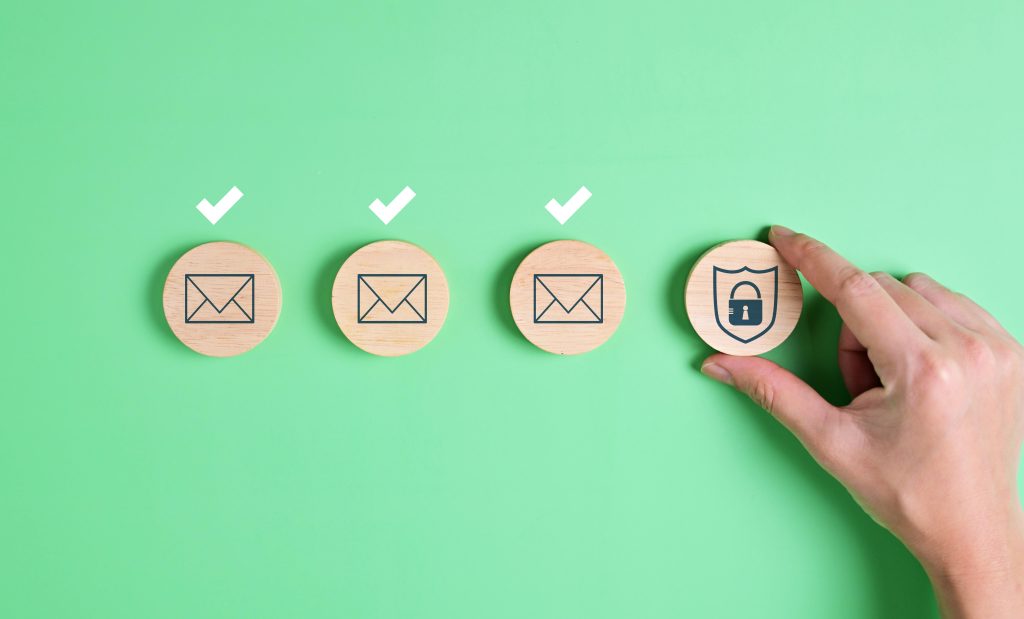We find that many of our customers are experiencing problems because of this, hence this short blog with an explanation. These problems were mainly related to the use of newsletter services such as Mailblue (Active Campaign) and Mailchimp. It is good to first understand all the measures Google has taken.

First, Google announced that they have implemented stricter authentication requirements for emails sent through their own platforms. This specifically has to do with strengthening authentication protocols such as SPF (Sender Policy Framework), DKIM (DomainKeys Identified Mail) and DMARC (Domain-based Message Authentication, Reporting and Conformance). But what exactly do these terms mean?
SPF (Sender Policy Framework)
SPF is a technology used to prevent e-mail spoofing. E-mail spoofing involves someone pretending to be someone else while sending e-mails. SPF tries to prevent this by checking that the IP address of the email being sent matches the IP addresses allowed to send mail on behalf of that domain name. When an IP address does not match, the mail is marked as spam.
DKIM (DomainKeys Identified Mail)
DKIM is a technology used to verify the authenticity of an e-mail. DKIM gives e-mail from your domain a specific “signature.” When an email is sent, a receiving party can check the “signature” and see if the email has not been intercepted or altered. When the signature no longer matches, the receiving party knows that the email came from an unauthorized source.
DMARC (Domain-based Message Authentication, Reporting and Conformance)
DMARC is a technology that allows domain owners to set specific rules for how e-mail from their domain should be handled if they do not meet authentication requirements such as SPF and DKIM. Thus, it can be set that if an e-mail does not meet the requirements, it will be blocked completely.
In addition to the authentication requirements, Google has also tightened their spam detection algorithm. This leads to better filtering of unwanted mail, thereby reducing the chances of legitimate mail ending up in your spam folder. Of course, it is then important that your sent mails meet the authentication requirements.
For companies that use services that send bulk emails, Google has enabled stricter guidelines that they will also enforce. For example, Google now does a much better job of checking whether bulk emails have a clear opt-out option for recipients. In addition, Google also checks for compliance with anti-spam laws and that bulk emails do not have misleading titles or content.
Because it often feels completely random to people when an email ends up in spam, Google has said it will start providing more insight into the performance of their emails and any delivery issues. This means they provide detailed insights on open rates (how many emails are opened), click-through rates (what gets clicked on in the email) and bounce rates (which emails do not arrive at the recipient).
In addition, Google also wants to provide more information about why certain emails may be flagged as spam or rejected.
Finally, Google has promised to provide plenty of educational resources and support to senders struggling to adapt to the new guidelines. This could include documentation, manuals and possibly even personal support.
In short, Google’s new measures are designed to improve overall email traffic and minimize spam.
Since many of our customers use Mailblue and Mailchimp, we have added a link per platform that allows you to check which settings in your domain name still need to be adjusted.
If you still can’t figure it out with the above documentation, feel free to contact us!

Want to know how we can create your winning website? During a free introduction with Bjørn, we will show you the opportunities for your business.
Need a website made in Rotterdam?